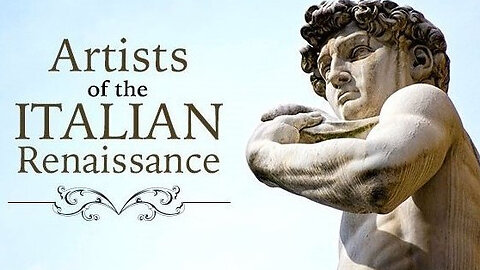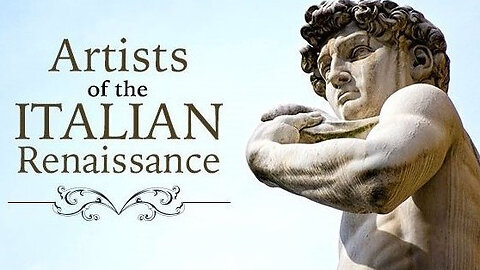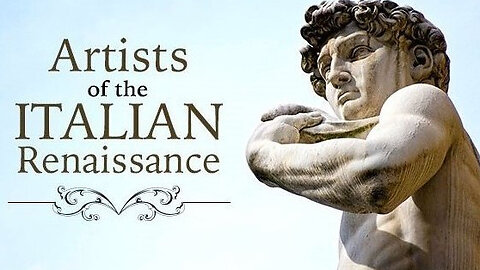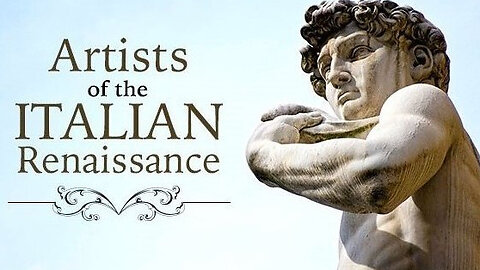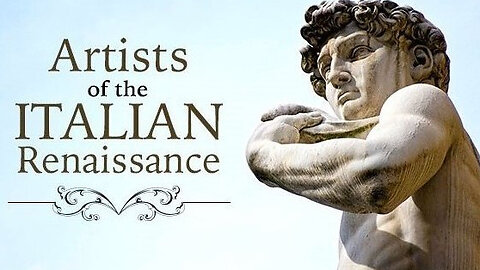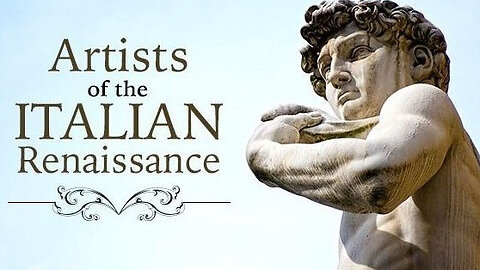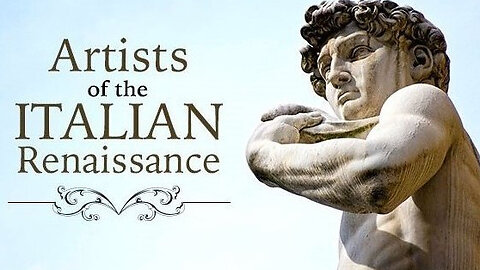
Great Artists of the Italian Renaissance
36 videos
Updated 2 months ago
36 Lectures, 30 minutes/lecture
Taught by William Kloss, M.A. Professor, Independent Art Historian
-
Great Artists of the Italian Renaissance | Italy and the Renaissance (Lecture 1)
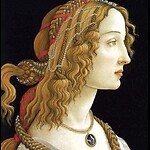 The Great Courses36 Lectures, 30 minutes/lecture Taught by William Kloss, M.A. Professor, Independent Art Historian Professor William Kloss is an independent art historian and scholar who lectures and writes about a wide range of European and American art. He was educated at Oberlin College, where he earned a B.A. in English and an M.A. in Art History. He continued his postgraduate work on a teaching fellowship at the University of Michigan and was then awarded a Fulbright Fellowship for two years of study in Rome. As Assistant Professor of Art History at the University of Virginia, he taught 17th- and 18th-century European art and 19th-century French art. No era of artistic achievement is as renowned as the Renaissance, and no country holds a higher place in that period than Italy. The supreme works created in Florence, Rome, Venice, and other Italian cities by such masters as Leonardo da Vinci, Botticelli, Michelangelo, Raphael, and Titian have never equaled and have established a canon of beauty that pervades Western culture to this day. To view these works is to enter a world that is incomparably rich, filled with emotion and drama that is palpable, though sometimes mysterious to our modern sensibility. To study these works with an expert is to penetrate that mystery and gain a new appreciation for how these masterpieces were created and what they meant to the artists and people of the time. Professor William Kloss is your guide through this visual feast in an artist-centered survey that explores hundreds of paintings and sculptures by scores of artists. These lectures cover art history at the times of the Early Renaissance and the High Renaissance, which extended from about 1400 to about 1520. Italy is the first and principal location of the Renaissance, and it was in Florence that it took its deepest root. The word renaissance means rebirth, and it is the name given to the transition from medieval to modern times in Europe, when the rediscovery of ancient Greek and Roman culture sparked a creative revolution in the humanities, the sciences, and the arts. Humanism, a philosophical, literary, and artistic ideal, went hand in hand with this rebirth. It emphasized the dignity and potential of humanity and inspired secular studies, as well as the creation of art that reflected the forms and ideas of the Classical era. Renaissance society—and art—was permeated with religion. In the arts, this new approach encompassed powerful new techniques for representing the human figure and the visible world, and also new attitudes about the roles of artists in society. From a modest rank as craftsman, the artist gradually rose to a status comparable to poets and philosophers. The first 25 lectures examine the artists of Central Italy, where Florence is located, then the focus shifts to Northern Italy. You cover the works of more than 40 artists. The visual content of this course puts it in a class with heavily illustrated art books. Some 500 images of paintings, sculptures, prints, drawings, maps, buildings, and architectural details are featured. Many works are explored in considerable depth, with searching commentary by Professor Kloss that is both enlightening and personal. In the final two lectures, Professor Kloss looks at the Renaissance as a whole and surveys the political, social, and religious events of the early 16th century that brought profound change to Italy and the rest of Europe. He then examines how art inevitably changed as a result. Altogether, the Renaissance lasted about 120 years, and the period of the High Renaissance a little over 40 years. No later Western art can be discussed without reference to this era—especially as it matured and flourished in the cities of Italy. Lecture 1: This lecture examines the features of late medieval culture in Italy that paved the way for the Renaissance. In painting, Giotto di Bondone evolved a proto-Renaissance style in contrast to the prevailing late-Gothic style.572 views
The Great Courses36 Lectures, 30 minutes/lecture Taught by William Kloss, M.A. Professor, Independent Art Historian Professor William Kloss is an independent art historian and scholar who lectures and writes about a wide range of European and American art. He was educated at Oberlin College, where he earned a B.A. in English and an M.A. in Art History. He continued his postgraduate work on a teaching fellowship at the University of Michigan and was then awarded a Fulbright Fellowship for two years of study in Rome. As Assistant Professor of Art History at the University of Virginia, he taught 17th- and 18th-century European art and 19th-century French art. No era of artistic achievement is as renowned as the Renaissance, and no country holds a higher place in that period than Italy. The supreme works created in Florence, Rome, Venice, and other Italian cities by such masters as Leonardo da Vinci, Botticelli, Michelangelo, Raphael, and Titian have never equaled and have established a canon of beauty that pervades Western culture to this day. To view these works is to enter a world that is incomparably rich, filled with emotion and drama that is palpable, though sometimes mysterious to our modern sensibility. To study these works with an expert is to penetrate that mystery and gain a new appreciation for how these masterpieces were created and what they meant to the artists and people of the time. Professor William Kloss is your guide through this visual feast in an artist-centered survey that explores hundreds of paintings and sculptures by scores of artists. These lectures cover art history at the times of the Early Renaissance and the High Renaissance, which extended from about 1400 to about 1520. Italy is the first and principal location of the Renaissance, and it was in Florence that it took its deepest root. The word renaissance means rebirth, and it is the name given to the transition from medieval to modern times in Europe, when the rediscovery of ancient Greek and Roman culture sparked a creative revolution in the humanities, the sciences, and the arts. Humanism, a philosophical, literary, and artistic ideal, went hand in hand with this rebirth. It emphasized the dignity and potential of humanity and inspired secular studies, as well as the creation of art that reflected the forms and ideas of the Classical era. Renaissance society—and art—was permeated with religion. In the arts, this new approach encompassed powerful new techniques for representing the human figure and the visible world, and also new attitudes about the roles of artists in society. From a modest rank as craftsman, the artist gradually rose to a status comparable to poets and philosophers. The first 25 lectures examine the artists of Central Italy, where Florence is located, then the focus shifts to Northern Italy. You cover the works of more than 40 artists. The visual content of this course puts it in a class with heavily illustrated art books. Some 500 images of paintings, sculptures, prints, drawings, maps, buildings, and architectural details are featured. Many works are explored in considerable depth, with searching commentary by Professor Kloss that is both enlightening and personal. In the final two lectures, Professor Kloss looks at the Renaissance as a whole and surveys the political, social, and religious events of the early 16th century that brought profound change to Italy and the rest of Europe. He then examines how art inevitably changed as a result. Altogether, the Renaissance lasted about 120 years, and the period of the High Renaissance a little over 40 years. No later Western art can be discussed without reference to this era—especially as it matured and flourished in the cities of Italy. Lecture 1: This lecture examines the features of late medieval culture in Italy that paved the way for the Renaissance. In painting, Giotto di Bondone evolved a proto-Renaissance style in contrast to the prevailing late-Gothic style.572 views -
Great Artists of the Italian Renaissance | From Gothic to Renaissance (Lecture 2)
 The Great CoursesLecture 2: Around 1400, a European-wide style known as International Gothic flourished in Italy. Artists including Lorenzo Monaco and Gentile da Fabriano retained this style. Others, such as Lorenzo Ghiberti, developed a new style that we call Renaissance.94 views
The Great CoursesLecture 2: Around 1400, a European-wide style known as International Gothic flourished in Italy. Artists including Lorenzo Monaco and Gentile da Fabriano retained this style. Others, such as Lorenzo Ghiberti, developed a new style that we call Renaissance.94 views -
Great Artists of the Italian Renaissance | Brunelleschi and Ghiberti in Florence (Lecture 3)
 The Great CoursesLecture 3: Architecture is central to understanding the birth of the Renaissance, and it was in Florence that the first great buildings of the Renaissance were constructed. This lecture looks at the buildings of Filippo Brunelleschi and the famous bronze doors of Lorenzo Ghiberti.80 views
The Great CoursesLecture 3: Architecture is central to understanding the birth of the Renaissance, and it was in Florence that the first great buildings of the Renaissance were constructed. This lecture looks at the buildings of Filippo Brunelleschi and the famous bronze doors of Lorenzo Ghiberti.80 views -
Great Artists of the Italian Renaissance | Donatello and Luca della Robbia (Lecture 4)
 The Great CoursesLecture 4: The most influential visual artist in Italy in the 15th century was Donatello. This lecture traces his work until he moved to Padua in 1443. Also covered is Luca della Robbia, whose superb choir gallery for the Florence Cathedral is in direct competition with Donatello's choir gallery for the same church.83 views
The Great CoursesLecture 4: The most influential visual artist in Italy in the 15th century was Donatello. This lecture traces his work until he moved to Padua in 1443. Also covered is Luca della Robbia, whose superb choir gallery for the Florence Cathedral is in direct competition with Donatello's choir gallery for the same church.83 views -
Great Artists of the Italian Renaissance | Masaccio (Lecture 5)
 The Great CoursesLecture 5: The first of two lectures on Masaccio examines his Pisa Altarpiece. Also studied is his monumental fresco The Trinity, with attention to his introduction of one-point perspective.66 views
The Great CoursesLecture 5: The first of two lectures on Masaccio examines his Pisa Altarpiece. Also studied is his monumental fresco The Trinity, with attention to his introduction of one-point perspective.66 views -
Great Artists of the Italian Renaissance | Masaccio - The Brancacci Chapel (Lecture 6)
 The Great CoursesLecture 6: This lecture looks at Masaccio's principal frescoes for the Brancacci Chapel, with special attention to their melding of style and narrative content. Masaccio undertook the project with Masolino.67 views
The Great CoursesLecture 6: This lecture looks at Masaccio's principal frescoes for the Brancacci Chapel, with special attention to their melding of style and narrative content. Masaccio undertook the project with Masolino.67 views -
Great Artists of the Italian Renaissance | Fra Angelico and Fra Filippo Lippi (Lecture 7)
 The Great CoursesLecture 7: Fra Angelico and Fra Filippo Lippi were the most important painters in Florence after the death of Masaccio. Fra Angelico was able to switch between a late medieval style and a more realistic Renaissance manner. Fra Filippo Lippi's paintings combine charm and inward quietness.63 views
The Great CoursesLecture 7: Fra Angelico and Fra Filippo Lippi were the most important painters in Florence after the death of Masaccio. Fra Angelico was able to switch between a late medieval style and a more realistic Renaissance manner. Fra Filippo Lippi's paintings combine charm and inward quietness.63 views -
Great Artists of the Italian Renaissance | Three Specialists (Lecture 8)
 The Great CoursesLecture 8: This lecture looks at paintings by three contrasting artists in Florence. Paolo Uccello was devoted to foreshortening and perspective. Andrea del Castagno found ways to make figures look like painted sculptures. And Domenico Veneziano introduced a tonal delicacy and pastel palette from his native Venice.60 views
The Great CoursesLecture 8: This lecture looks at paintings by three contrasting artists in Florence. Paolo Uccello was devoted to foreshortening and perspective. Andrea del Castagno found ways to make figures look like painted sculptures. And Domenico Veneziano introduced a tonal delicacy and pastel palette from his native Venice.60 views -
Great Artists of the Italian Renaissance | Donatello and Padua (Lecture 9)
 The Great CoursesLecture 9: Continuing the career of Donatello, Professor Kloss covers Donatello's move to Padua to work on a bronze equestrian statue, Gattamelata. Among his other Paduan works is a wooden sculpture, Saint John the Baptist. On returning to Florence, he made the even more expressive Saint Mary Magdalene.67 views
The Great CoursesLecture 9: Continuing the career of Donatello, Professor Kloss covers Donatello's move to Padua to work on a bronze equestrian statue, Gattamelata. Among his other Paduan works is a wooden sculpture, Saint John the Baptist. On returning to Florence, he made the even more expressive Saint Mary Magdalene.67 views -
Great Artists of the Italian Renaissance | Piero della Francesca - Individual Works (Lecture 10)
 The Great CoursesLecture 10: The first of two lectures on Piero della Francesca explores works painted between about 1445 and 1470, including his Baptism of Christ and the famous Resurrection, and later paintings such as the Madonna and Child with Saints and the unfinished Nativity.72 views
The Great CoursesLecture 10: The first of two lectures on Piero della Francesca explores works painted between about 1445 and 1470, including his Baptism of Christ and the famous Resurrection, and later paintings such as the Madonna and Child with Saints and the unfinished Nativity.72 views

